Service Center
Schedule Service
What does your Chevy "service tire monitor system" warning mean? What's involved in a tire pressure monitoring system (TPMS)? We're here to answer these questions and lend a hand with any tire-pressure-related concerns that you may have.
The "service tire monitor system" light can let you know of an issue with tire pressure or may indicate the TPMS itself is facing an issue. There are more complexities involved, so read on to see how it works, what it means, why your vehicle has it, and how to get it fixed. Sometimes it can require professional service at an authorized service center, and we're here to get it done for your Chevy Silverado 1500 lease, pre-owned Chevy Equinox, or any other Chevy model.
To understand what the Chevy "service tire monitor system" warning is, we must look at what a tire monitor system/TPMS is in the first place. Firstly, two types of TPMSs are used: direct and indirect. Direct TPMS, as the name suggests, directly gets a reading on tire pressure using a sensor mounted on the wheel and protruding into the tire. Indirect TPMS uses wheel speed readouts and fluctuations of it via the ABS sensor (and sometimes others) to get a measure of your tire pressure.
In either case, your vehicle is using a physical set of sensors to monitor tire pressure. When they detect pressure levels outside of a pre-programmed range, they let you know with the TPMS light on your dashboard, the "service tire monitor system" warning, a specific pressure readout on your infotainment screen, or all at once.
The TPMS light is separate from the "service tire monitor system" blinking light on your dashboard. But, it will typically be illuminated alongside it when a problem with tire pressure arises.
In some cases, it's simply there to let you know of suboptimal tire pressure but can indicate a deeper issue if it stays illuminated after filling the tires. Think about the positioning of such sensors. No matter if its on a Chevy Traverse lease or a used Chevy Trax, the sensors ride either inside or close to the wheels and are often subject to all the bumps and constant spinning force the wheels go through as you drive.
Think about the positioning of such sensors. No matter if its on a Chevy Traverse lease or a used Chevy Trax, the sensors ride either inside or close to the wheels and are often subject to all the bumps and constant spinning force the wheels go through as you drive.
Many road contaminants can compromise indirect TPMS, and pothole-ridden commutes can do much the same for direct TPMS. Even then, these sensors can wear out and malfunction as the years roll on.
That's the gist of it. When your Chevrolet "service tire monitor system" warning comes on and does not turn off or is accompanied by a flashing TPMS light, it can mean your TPMS is malfunctioning and requires servicing.
Aside from indicating that your TPMS requires servicing, it is essential for several other reasons. When the Chevy "service tire monitor system" warning is displayed, tire pressure can be at or fall to suboptimal levels, or the tires may be compromised and unable to maintain proper tire pressure. The results of this can include problems like:
The results of this can include problems like:
There's no benefit to incorrect tire pressure, only downsides. That's the purpose behind this warning. Maintaining optimal tire pressure or diagnosing and servicing the system malfunction as soon as possible is key to a healthy vehicle.
The TPMS light and "service tire monitor system" warning can often be reset by adjusting your tire pressure to optimal levels and then driving around like you normally would for several minutes, followed by turning the car off, then back on. If the GM "service tire monitor system" warning stays on after doing this or is joined by a flashing TPMS light, resetting it at home should not be attempted, and professional diagnosis and servicing at an authorized Chevy service center is required.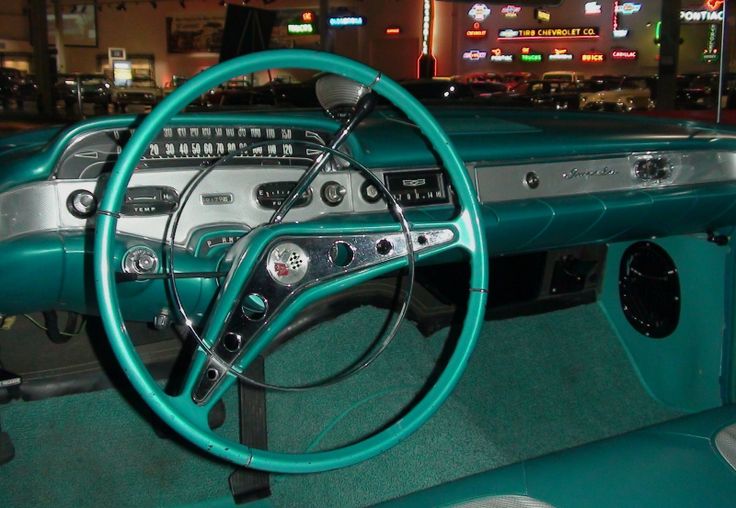
Sometimes it's a matter of installing new tires, and sometimes the sensors must be replaced. Sometimes it can be caused by deeper electrical issues, but it will require certified technicians to figure out and service in any case. It's not a cause for significant concern, but getting it taken care of as soon as you can is necessary to maintain vehicle health.
On most models, whether a Chevy Impala or Silverado, the "service tire monitor system" warning will often be displayed in the gauge cluster on either the instrument screen or the display in-between the gauges. So will the TPMS light. That said, whether you lease a Chevy Colorado or buy a Chevy Cruze, they all follow a similar process to reset the light: Fill the tires to the correct pressure, drive around, and turn the car off then on again. If that doesn't work, stop by an authorized service center.
When facing a Chevy "service tire monitor system" warning that doesn't turn off or is accompanied by a flashing TPMS light, we're here to help. Our service center will make finding the issue and servicing the system a breeze with top customer service, and your vehicle will ride smoothly in no time at all. Contact us, and we'll help set up an appointment today.
Our service center will make finding the issue and servicing the system a breeze with top customer service, and your vehicle will ride smoothly in no time at all. Contact us, and we'll help set up an appointment today.
A Chevy "service tire monitor system" warning can mean one of two things. The first is that your tire pressure is suboptimal and requires adjusting to manufacturer-recommended levels. The second meaning applies if the warning does not go away after filling the tires or if a flashing TPMS light accompanies it. Such a situation means that the system has malfunctioned and requires diagnosis and servicing at an authorized service center.
The simplest way to reset the Chevy "service tire monitor system" warning light is by filling your tires with air to the optimal manufacturer-recommended pressure. This pressure level can be found in your owner's manual or on a sticker in your doorjamb. After doing so, drive around normally for as long as 10 minutes. Then, turn off the car, and turn it back on again. If this does not work, take your vehicle to an authorized Chevy service center for diagnosis, as a malfunction may have occurred.
This pressure level can be found in your owner's manual or on a sticker in your doorjamb. After doing so, drive around normally for as long as 10 minutes. Then, turn off the car, and turn it back on again. If this does not work, take your vehicle to an authorized Chevy service center for diagnosis, as a malfunction may have occurred.
Servicing a tire monitor system is a job that requires a set of advanced tools, thorough mechanical experience, and the correct parts per vehicle. It's not a job that should be attempted at home, and an authorized dealership's service center is the best way to have it serviced. You can find one such service center at Matt Bowers Chevy Metairie, and we have all the know-how needed to service yours and competitive prices to make it a breeze.
* = required
MessageSubject Message Text
Contact InformationFirst Name* Last Name* Preferred Contact EmailPhone Email* Phone ZIP Code*
IDHL7E
Joint Applicant's Information By providing my contact information above, I consent that GM and/or a GM dealer can contact me with GM and/or GM dealer offers and product information.Press and hold the check symbol under the i button. This is the reset button. After a second or two, the TPMS will reset and the tire pressure will be checked.
The radio method
To reset the system, first check that the tire pressures are correct. Start the engine and press and hold the reset button. You find it on the dashboard at the bottom right of the steering wheel. Press and hold the button until the TPMS warning light on the instrument panel flashes slowly three times.
You find it on the dashboard at the bottom right of the steering wheel. Press and hold the button until the TPMS warning light on the instrument panel flashes slowly three times.
TPMS reset procedure Chevrolet Malibu (2008 2010)
Usually, tire pressure is lowered in cold weather, even if they are properly inflated. This is because the fabric compresses when it’s cold, while it expands when it’s hot. This will turn on the low tire pressure warning light, but the tires will be just as good, but will go out when the tires are warm.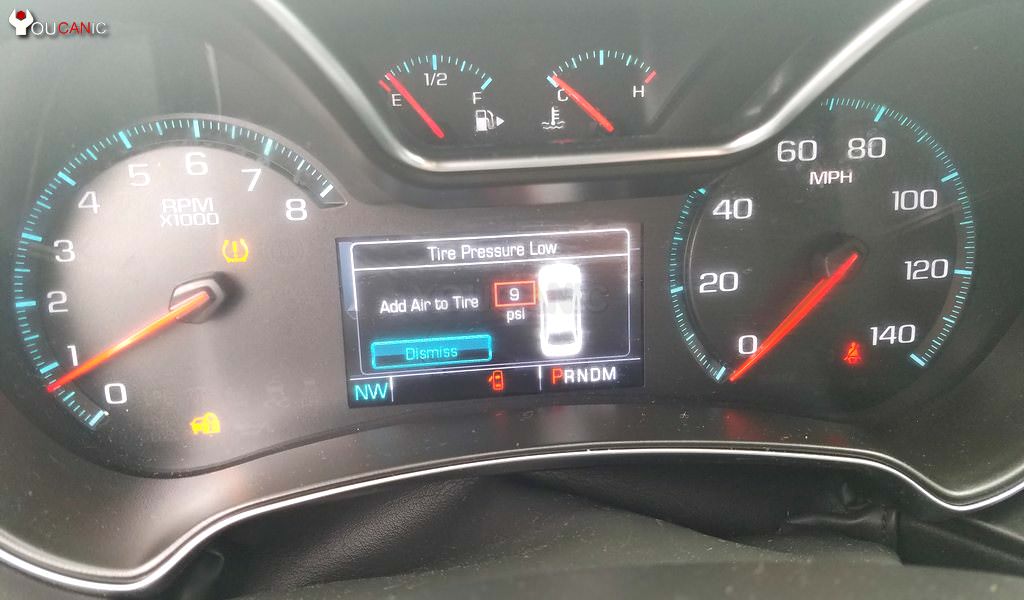
If the TPMS warning light comes on and goes on, it means that the tire pressure is low in one or more tires. When the tire is inflated to the recommended pressure on the door panel, the warning light goes out.
TPMS EASY RESET TOOL. The Quickset Light TPMS Reset Tool is the perfect tool for DIY enthusiasts who want to reset TPMS lights on their own after replacing or turning a tire or replacing a failed TPMS sensor.
Tire Pressure Monitoring System (TPMS) is designed to alert you when tire pressure is too low and could lead to dangerous driving conditions. If the light comes on, it means your tires may be too small, which can lead to unnecessary tire wear and possible tire damage.
Press the Set / Reset button and the message Tire learning active appears. Use the J46079 pressure gauge for the left tire, hold the antennas against the valve stem and press the active button. Wait about 10 seconds and you will hear a ■■■■.
Use the J46079 pressure gauge for the left tire, hold the antennas against the valve stem and press the active button. Wait about 10 seconds and you will hear a ■■■■.
Start with the left front wheel, hold the antenna of the J46079 against the sidewall of the tire near the rim at the valve stem position, then press and release the trigger button and wait for a ■■■■ or raise / lower the tired Press to 810 seconds, then wait for a chirp.
This means that the compass vehicles are calibrated for the current region.
Subject: Chevrolet Impala (2006-2012) TPMS Reset Procedure 2. Press and hold the lock and unlock buttons on the remote control remote control until the ■■■■ sounds and the left turn signal lights up. Or press the INFO button with the CIB and release it until LEARN TIRES appears on the display..jpg)
Estimate and say that the correct tire pressure is between 35 and 40 psi.
Press the Set / Reset button and the message Tire learning active appears. Use the J46079 pressure gauge for the left tire, hold the antennas against the valve stem and press the active button. Wait about 10 seconds and you will hear a ■■■■.
Service Tire Monitor System 2008 Impalahttps://www.youtube.com/watch?v=eDkOrZP9Z7U
 S.
S.  S.
S. | Vitaly Kabyshev, . Photo of manufacturers | |
| A punctured tire is always very annoying. But it is better to know about the flat tire in advance - this is where tire pressure sensors will help. |
The first patent for a tire was obtained in 1846, and since then the wheels have been constantly punctured. It is clear to anyone that a flat tire does not bode well. Yes, and dropped pressure can be very dangerous: it’s not for nothing that in the “Daily Maintenance” section of the car’s operating instructions, the item “Checking tire pressure” is one of the first.
When a tire "breathes", the rolling resistance increases significantly.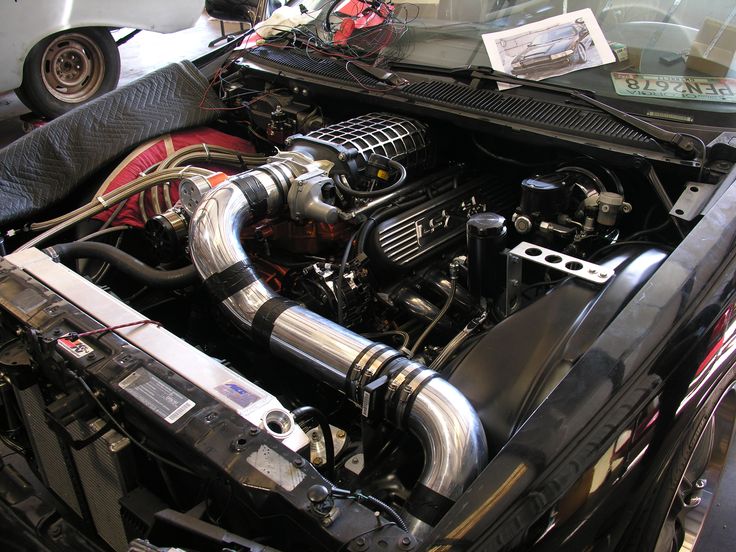 Where does this lead? To an increase in fuel consumption, increased tire wear and, of course, to the side slip of the car. Moreover, such a small drift to the side can be attributed to the slope of the road or rut. So the driver, by mistake or inexperience, can continue to move for quite some time. And the most dangerous thing about this is that in an emergency, for example, during a sharp maneuver or braking, a flat tire can break off the disc or turn over. And here it is not far from the accident.
Where does this lead? To an increase in fuel consumption, increased tire wear and, of course, to the side slip of the car. Moreover, such a small drift to the side can be attributed to the slope of the road or rut. So the driver, by mistake or inexperience, can continue to move for quite some time. And the most dangerous thing about this is that in an emergency, for example, during a sharp maneuver or braking, a flat tire can break off the disc or turn over. And here it is not far from the accident.
Therefore, this disgrace must be fought with all your might. And the sooner the driver notices the loss of pressure, the better. Of course, the easiest way is to check the pressure before the trip by connecting a pump or pressure gauge to each wheel in turn. But we are lazy and forgetful people. And the pleasure of poking around in the cold or in the rain with some kind of devices is small. Moreover, there is already a whole bunch of systems that can check this very pressure.
China-made caps signal pressure loss by changing color.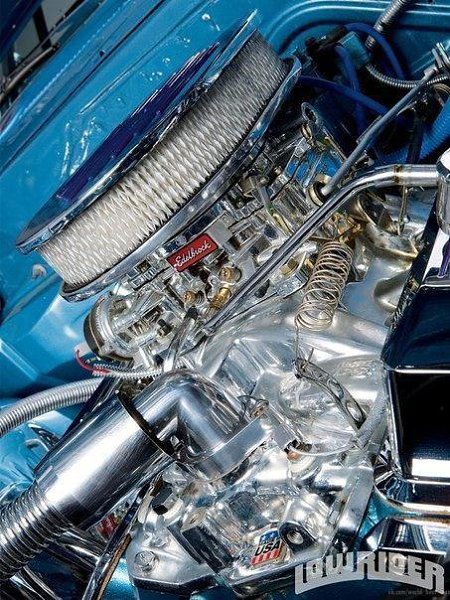 Informativeness is good, accuracy is questionable.
Informativeness is good, accuracy is questionable.
The simplest of them are special caps with color indicators that are installed instead of the standard caps on the boost valves. The pressure dropped below, say, two atmospheres - a warning yellow (orange, purple) strip will appear under the transparent cap of such a miracle cap. Yeah, it's clear that something is wrong with the wheel, we need to check. The pressure has dropped even lower - the cap will “paint” in a different, usually red color, which will indicate the criticality of what is happening. The advantage of this approach is simplicity. Minus - not enough good information content. After all, the caps can only be seen during a stop. Still, getting around the car before the trip, looking at the colors of the caps, is much easier than measuring the pressure every time.
Another disadvantage is that the caps start informing about the change in pressure only when it drops below some certain values, which, by the way, can be quite normal for your car and your wheels. So, you need to select them exactly for your car.
So, you need to select them exactly for your car.
The radio sensors of many electronic monitoring systems are mounted on the disk using special clamps.
And in order to notice something wrong while driving, it would be nice to have an electronic system on board that would automatically notify you of dangerous pressure drops. And not just notify, but would do it on time (so that there was time to orient) and without false positives.
The installed control system in this case will warn the driver at the right time about a change in the corresponding parameter and give him enough time to stop the car safely. It is clear that in cases of a serious puncture or explosion of a tire, such systems will not help, since the driver will feel the car pull without any sensors. But with a “slow” puncture, such electronics are simply irreplaceable.
There are, for example, systems that transmit tire pressure and temperature data to the central unit via radio. And there are those who can transmit this data via Bluetooth to phones or communicators.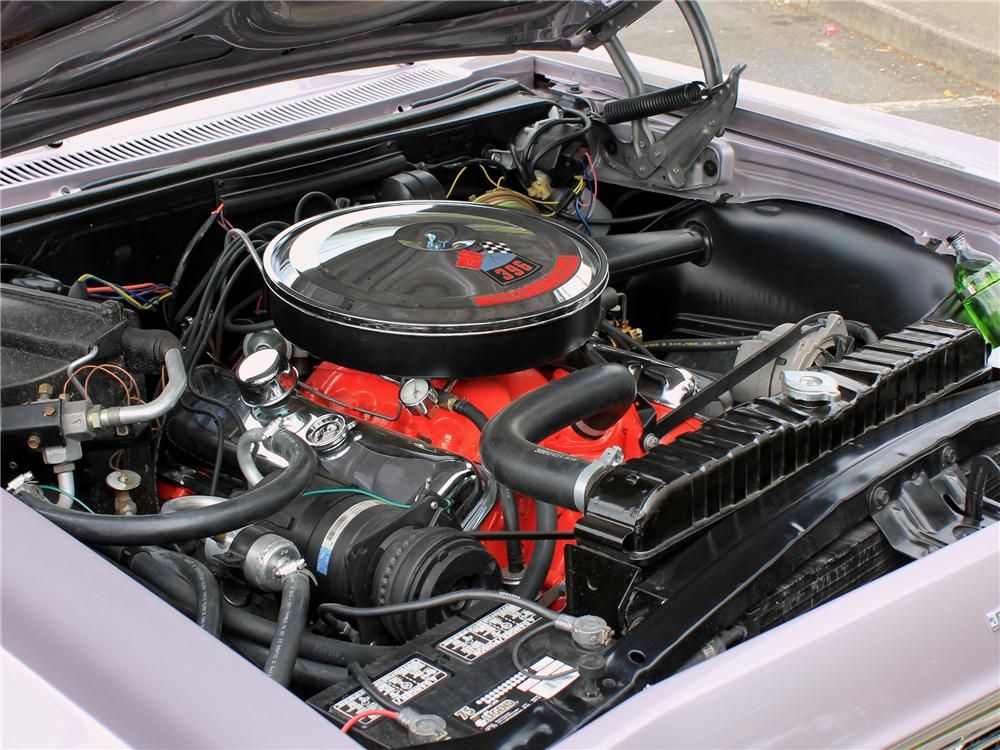 Well, it's very convenient.
Well, it's very convenient.
X-Pressure pressure monitoring system developed by Pirelli. In the simplest version of Optic, it consists of four caps that are installed on regular valves. And they signal a drop in pressure by a change in color.
But there are also more tricky systems that work without "real" pressure sensors, but through ABS. It is they who are usually put in the standard configuration of cars. How do they work?
Electronics with the help of sensors at each moment of time determines the speed of the wheels and their relative difference. As you know, when the pressure drops, the height of the tire profile becomes lower. Consequently, the speed of rotation of the wheel with the "sick" tire increases, therefore, the difference in the frequencies of rotation of the wheels on the same axle also increases. As a result, the system captures these changes - and gives an alarm signal.
Acoustic X-Pressure system. Sensors are built into the caps that register pressure, and radio transmitters that provide communication with the central unit. As soon as the pressure has dropped, a corresponding indication appears on the display of this unit and a warning sound signal is heard. Batteries in caps are enough for about 5 thousand hours of operation, which corresponds to five years of operation. Replacement of batteries in the caps is not provided, therefore, at the end of the service life, the set must be changed completely.
As soon as the pressure has dropped, a corresponding indication appears on the display of this unit and a warning sound signal is heard. Batteries in caps are enough for about 5 thousand hours of operation, which corresponds to five years of operation. Replacement of batteries in the caps is not provided, therefore, at the end of the service life, the set must be changed completely.
Why is this indirect method of determining tire pressure bad? Such systems can work, for example, in long turns, when for a relatively long time the system detects a large difference in the rotational speeds of the wheels of different sides (after all, the outer wheels spin at a higher speed than the inner ones). And these are flowers.
One of the more sophisticated X-Pressure options, AcousticBlue can transmit pressure data via Bluetooth to a mobile phone. There is such a thing from 160 euros.
In some cases, such systems are useless at all. For example, when tires with run-flat technology are installed on a car. Recall that for tires with this technology, even with a complete loss of pressure, the profile height decreases slightly - by about 30-40%. There is no pressure in the tire, and the reinforced sidewalls continue to “hold”, and not just hold, but allow you to continue moving at a very decent speed, for quite a long time.
Recall that for tires with this technology, even with a complete loss of pressure, the profile height decreases slightly - by about 30-40%. There is no pressure in the tire, and the reinforced sidewalls continue to “hold”, and not just hold, but allow you to continue moving at a very decent speed, for quite a long time.
Many cars themselves warn their owner of a drop in tire pressure.
Still, this system can help a lot, especially on a long journey, warning you in time that there are problems with the wheels. But relying on "helpers" is not completely worth it. Therefore, instead of the conclusion, we will write only two, no, three words. Watch the pressure, comrades! At least once a week, and if you notice that the wheel is flat, don't be lazy, pump it up.
Comments
Share
Like
Tweet
Send
© 2005–2022 Drive LLC, media registration certificate No. ФС77-69924 16+
Full version of the site
Tire pressure monitoring system
TPMS (Tire Pressure Monitoring System)
iTPMS system
direct TPMS system
Tire pressure warning reset switch
· To initialize the system, you need to . ..
..
Primary system check
Caps have windows...
Indirect tire pressure monitoring system
Recently, more and more often I have to deal with customer questions in my work: “... what kind of light is on the dashboard, please turn it off”, Fig. 1:
And this is not surprising, because in the US automotive market, TPMS has been introduced since 1999, and since 2008 it has become a mandatory basic equipment system for all cars and light trucks sold in America. More than 600 people died on American roads in 2011 due to inadequate tire pressure, according to the US National Highway Traffic Safety Administration (NHTSA). Since 2006, this option has become more and more widely available on cars produced for Europe.
As practice shows, used cars from America are cheaper for a Russian buyer than a car of the same class from Europe, and Russians are happy to buy Japanese Toyotas, Lexuses, Mazdas or Hondas brought from North America. And here many owners of these cars are waiting for the first not very pleasant surprise. As a rule, transportation by sea goes in containers and often the wheels are removed from the cars, storing them separately, the batteries are turned off, at the request of future owners in America they change the wheels to “beautiful” ones and no one thinks that upon arrival in Russia it is necessary to restore normal operation of the TPMS system. As a result, having registered the car, its operation begins with a visit to a car service and additional financial expenses, for which most owners are simply not mentally prepared.
And here many owners of these cars are waiting for the first not very pleasant surprise. As a rule, transportation by sea goes in containers and often the wheels are removed from the cars, storing them separately, the batteries are turned off, at the request of future owners in America they change the wheels to “beautiful” ones and no one thinks that upon arrival in Russia it is necessary to restore normal operation of the TPMS system. As a result, having registered the car, its operation begins with a visit to a car service and additional financial expenses, for which most owners are simply not mentally prepared.
The latest fresh example from my practice is a 2008 Lexus IS250 4GRFSE. The car is in perfect condition, black metallic, white leather interior, complete set and new wheels, which were installed before being sent to Russia at the request of the future hostess ... but it never occurred to anyone that it was necessary to prescribe sensors. The Americans, apparently, are indifferent, and the hostess could not even imagine such a problem.
Removal / installation of wheels, mounting / dismantling of tires to rewrite sensor numbers, balancing 4 wheels, pole registration of four sensors and it's still good that all the sensors were in place and working, and if not, then cash injections into the car are significant would have increased, Fig. 2:
So what is the TPMS tire pressure monitoring system, which has another name TPWS (Tire Pressure Warning System). What prompted auto manufacturers to implement this system in their cars?
First of all, it is road safety and the fight for the environment. But what about car owners, for additional safety they bear additional costs for use and maintenance? Not only. There are also more pleasant moments in it, in addition to increased safety, there is also a general reduction in the cost of operating a car. According to studies conducted in the United States, it was found that the life of car tires decreases in direct proportion to insufficient pressure. A tire that should have a standard pressure of 32psi has a life of 80,000 miles if the pressure drops to 29psi then subtract 8,000 miles, up to 26 psi minus 16,000 miles, and up to 22 psi, then minus 24,000 miles or more than 25%. Of course, all these numbers are correct, provided that the rims are unblemished and the wheels are properly balanced.
A tire that should have a standard pressure of 32psi has a life of 80,000 miles if the pressure drops to 29psi then subtract 8,000 miles, up to 26 psi minus 16,000 miles, and up to 22 psi, then minus 24,000 miles or more than 25%. Of course, all these numbers are correct, provided that the rims are unblemished and the wheels are properly balanced.
Initially, some car manufacturers began to include tire pressure monitoring in the ABS system. This is a fairly simple and low-cost method for solving this problem, but it has some limitations. Such a system is called “indirect” Indirect TPMS, its advantage is low cost, already installed sensors and blocks are used, there are also disadvantages, such as a significant measurement error and some others, although NIRA Dynamics AB and Dunlop Tech GmbH promoting iTPMS in the European market have several a different point of view, but more on that at the end of the article.
In general, the American auto industry was a pioneer in the implementation of this system. But on most North American iTPMS systems (1999 to 2003 vehicles), the system cannot detect pressure leaks if two tires on the same axle or all four wheels have the same pressure loss. The principle of operation of the iTPMS system is as follows, when the tire pressure changes, the circumference of the wheel also changes, respectively, the wheel speed changes, which is recorded by the ABS system speed sensor and when the permissible limits are exceeded, the warning lamp lights up. In most cases, in order for the speed sensor to record the difference in wheel speed, the pressure loss should be somewhere between 0.55 - 0.95 bar. It depends on the type, diameter and proportion of tires, as well as the sensitivity of the ABS system. On low-profile tires with hard sidewalls, the diameter will change less than on standard tires with high proportions and softer sidewalls. A loss of 0.7 bar on a low profile tire can change the diameter by less than 1mm, and most ABS systems cannot detect a change in RPM with a diameter reduction of less than 1mm.
But on most North American iTPMS systems (1999 to 2003 vehicles), the system cannot detect pressure leaks if two tires on the same axle or all four wheels have the same pressure loss. The principle of operation of the iTPMS system is as follows, when the tire pressure changes, the circumference of the wheel also changes, respectively, the wheel speed changes, which is recorded by the ABS system speed sensor and when the permissible limits are exceeded, the warning lamp lights up. In most cases, in order for the speed sensor to record the difference in wheel speed, the pressure loss should be somewhere between 0.55 - 0.95 bar. It depends on the type, diameter and proportion of tires, as well as the sensitivity of the ABS system. On low-profile tires with hard sidewalls, the diameter will change less than on standard tires with high proportions and softer sidewalls. A loss of 0.7 bar on a low profile tire can change the diameter by less than 1mm, and most ABS systems cannot detect a change in RPM with a diameter reduction of less than 1mm.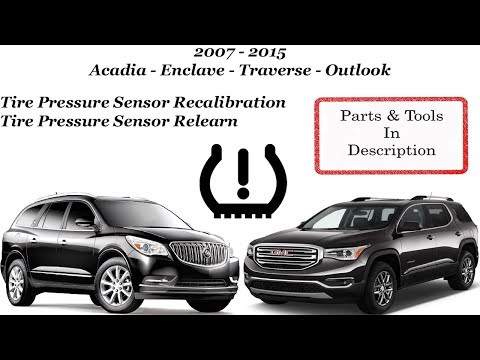 For this reason, iTPMS is not as sensitive as dTPMS, where pressure sensors are located in each wheel.
For this reason, iTPMS is not as sensitive as dTPMS, where pressure sensors are located in each wheel.
Also in the iTPMS system, the calibration of each tire must be carried out, after replacement, repair or balancing. The driver must press the special iTPMS button - "reset" on the instrument panel or follow the adaptation procedure described on the information display. It is important that all tires are properly inflated before the recalibration procedure - otherwise the iTPMS control module will calibrate the wheels incorrectly and may not detect tire pressure loss. Recalibration procedures differ significantly by vehicle manufacturer and year. In America, even a special reference program has been released, the cost of which ranges from $85 to $185 USD. You can order and buy if necessary here - http://www.tireindustry.org/pdf/0908-TPMS-RelearnFlyer_lorez.pdf . The program has all the cars of the American market, regardless of the country of manufacture.
No special procedures other than the calibration described above are required for the iTPMS system.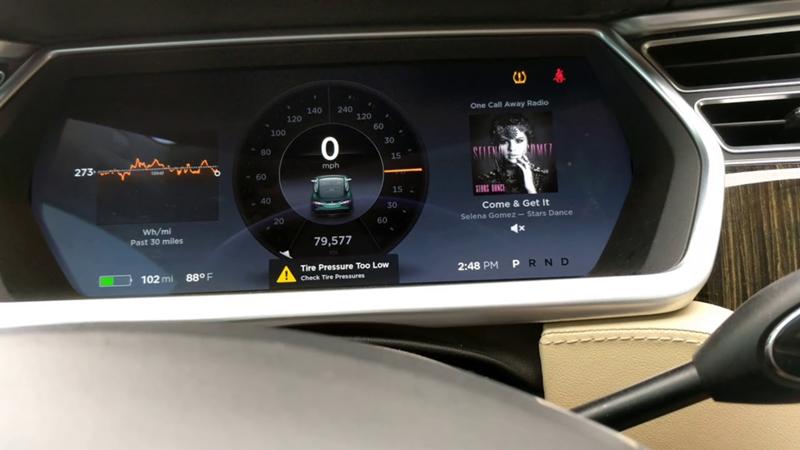 It is only necessary to check the tire pressure before calibration for compliance with the specified one. The system is quite reliable and its failure is possible only in the event of a breakdown in the ABS system.
It is only necessary to check the tire pressure before calibration for compliance with the specified one. The system is quite reliable and its failure is possible only in the event of a breakdown in the ABS system.
Some models of cars of the American market with iTPMS system - 2001-2003 Ford Windstar, 1997-2002 Buick Park Avenue, 1999-2003 Buick Century & Regal, 2002-2003 Buick LeSabre, 2003 Buick Rendezvous & Aztek, 2000-2003 Chevy Impala & Monte Carlo, 1999-2002 Chevy Alero, 1999-2002 Pontiac Grand Am, 1997 - 2003 Pontiac Grand Prix, 2000 - 2003 Pontiac Bonneville, and 2001-2003 Oldsmobile Aurora.
In the direct TPMS system, a separate valve is installed in each wheel with a built-in pressure sensor, optionally with a temperature sensor, transmitter, antenna and a battery that provides power to the electronic components. The valve stem and cap serve as the antenna, so you should not change the original cap for a new plastic one, you can suddenly get an absolutely unnecessary problem and a headache to fix it. On Honda vehicles, when the TPMS ECU is in "learning mode", activating the sensors in sequence tells the TPMS ECU where the wheel is located. The sequence usually starts with the left front wheel, and moves clockwise. Adaptation of the system on some car models may be necessary even after balancing when servicing wheels, dismantling / mounting, changing tires or repairing punctures. But I have not yet met with such people because our car service center has not provided tire fitting services until recently. Before starting the diagnostics and maintenance of this system at Toyota, be sure to write down the IDs of all sensors on a sheet and have it at hand, because in case of registration, even when replacing one sensor, you will have to re-enter the IDs of all sensors. And to register sensors on Honda cars, you only need the HDS dealer program, and with the original Honda HIM or GNA 600 adapter. Also, using a scanner, you can change the threshold for a given tire pressure, naturally notifying the owner about it so that he can control it and in case of arrival for service at another service.
On Honda vehicles, when the TPMS ECU is in "learning mode", activating the sensors in sequence tells the TPMS ECU where the wheel is located. The sequence usually starts with the left front wheel, and moves clockwise. Adaptation of the system on some car models may be necessary even after balancing when servicing wheels, dismantling / mounting, changing tires or repairing punctures. But I have not yet met with such people because our car service center has not provided tire fitting services until recently. Before starting the diagnostics and maintenance of this system at Toyota, be sure to write down the IDs of all sensors on a sheet and have it at hand, because in case of registration, even when replacing one sensor, you will have to re-enter the IDs of all sensors. And to register sensors on Honda cars, you only need the HDS dealer program, and with the original Honda HIM or GNA 600 adapter. Also, using a scanner, you can change the threshold for a given tire pressure, naturally notifying the owner about it so that he can control it and in case of arrival for service at another service. And Honda also has a very handy option for locating the sensor, which makes it much easier to identify it in the presence of a malfunction. Unfortunately, Toyota does not provide such functions in the Techstream program.
And Honda also has a very handy option for locating the sensor, which makes it much easier to identify it in the presence of a malfunction. Unfortunately, Toyota does not provide such functions in the Techstream program.
There is another very important caution when servicing wheels with dTPMS sensors. When a wheel is punctured, in no case should you use an aerosol sealant to repair it. The sealant can interfere with the normal operation of the pressure sensor, distorting the readings or completely incapacitating it. And instead of one problem, you can get another, much more expensive one. Usually on cans with such an aerosol there is always information about the impossibility of its use in cars equipped with a dTPMS system.
iTPMS systems are not sensitive to this problem - photo 3:
Diagnostics and tuning of dTPMS systems can be performed not only by dealer equipment, testers of such well-known brands as ATEQ, Bartec, OTC and many others are available on the secondary market in the USA.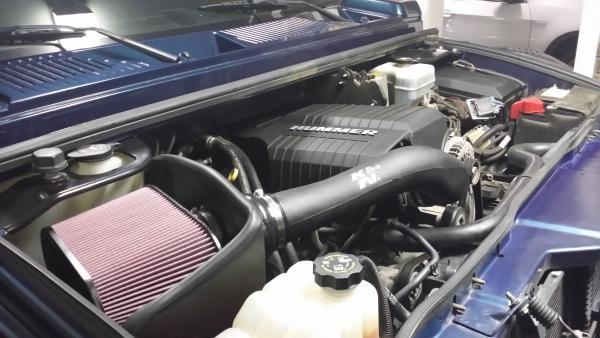 The cost of such multi-brand testers fluctuates between a little more or less than $500 USD. The price depends on the coverage of brands, model range and available features. Anyone can purchase this equipment.
The cost of such multi-brand testers fluctuates between a little more or less than $500 USD. The price depends on the coverage of brands, model range and available features. Anyone can purchase this equipment.
The tester, when connected to the dTPMS system, usually activates the pressure sensors in such a way that they begin to broadcast a signal. The dTPMS ECU then checks the functionality of all sensors and their readings. This tool can be used both to check the operation of each individual sensor, register new sensors in the ECU when they are replaced, and to troubleshoot the dTPMS system. Many of these testers have a USB port that allows you to update the software as needed, as well as download information from the tester's memory to a PC for printing or saving.
Let's take a closer look at the dTPMS system using the example of a 2008 Toyota Land Cruiser.
In the figure below, you can trace the relationship of all components of the system, and as you can see, everything is quite simple and understandable - fig. 4:
4:
Each wheel on this car, including the spare one, has a valve with a pressure sensor built into it, a transmitter and a battery for autonomous power supply of the sensor, - fig. 5:
The sensor reads pressure readings and data in the form of a radio signal, including the ID of each sensor, and is transmitted to the Tire Pressure ECU via an antenna in a receiver installed on the roof of the car, - fig. 6:
As long as the sensor IDs are registered in the Tire Pressure ECU, the program compares the pressure in all tires, including the spare tire. If the air pressure readings are below a certain threshold set by software in the ECU, the corresponding banner lights up on the panel and warns the driver about this.
Also, if it becomes necessary to reset the system readings and its current initialization, there is a corresponding Tire pressure warning reset switch on the bottom of the dashboard under the steering wheel, - fig.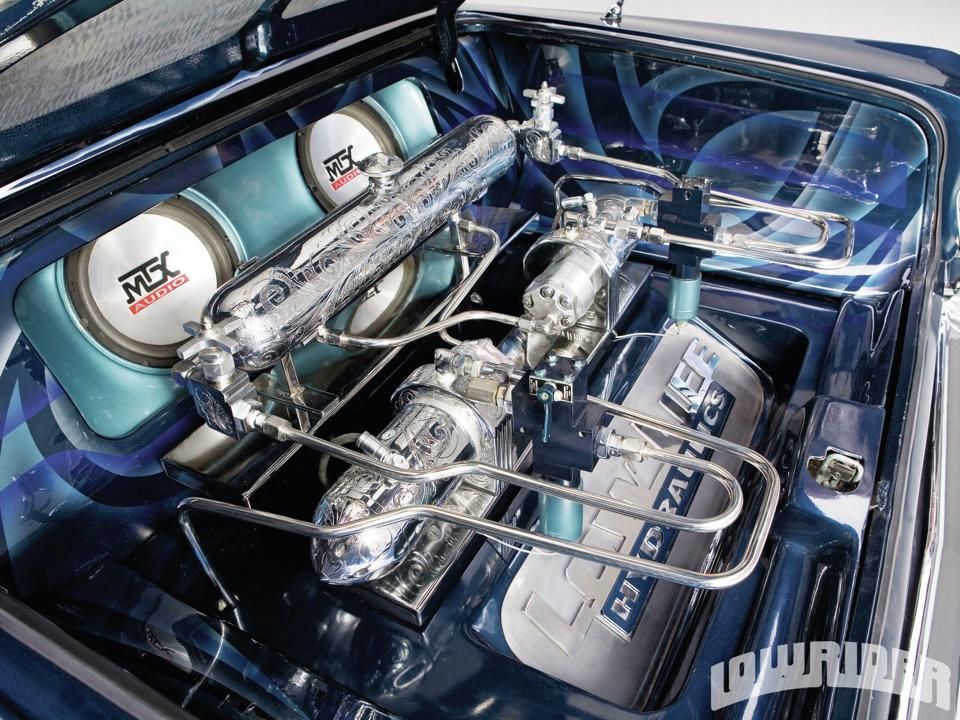 7:
7:
When the dTPMS system is running, the ECU of the system can operate with programmed data that corresponds to a certain type of tire. Thus, when selling, the dealer must set the warning threshold to an appropriate value in accordance with the rules of the selling market.
Use the reset function only after the air pressure in all tires (including the spare tire) has been corrected for the specific vehicle according to the information from the dealer (230kPa for a 2008 TLC 200).
To initialize the system, press and hold the Tire pressure warning reset switch for 3 or more seconds with the ignition key (IG ON). When the system ECU receives an initialization signal, the warning indicator on the instrument panel flashes 3 times (1 second on, 1 second off).
During the initialization of the system and the tire pressure sensors, the registered signals are transmitted to the ECU at a frequency of once per minute. The initialization process is completed when the signals from all sensors in the tires (including the spare wheel) have been received.
Initial system check
When the driver turns on the vehicle's ignition, the TPMS warning light should come on for 3 seconds and then turn off. If the lamp does not light up, then first of all it is necessary to check the lamp itself and its wiring.
If the lamp lights up and does not go out, then there are problems in the system that need to be identified and eliminated. In the absence of a dealer scanner, first of all, it is necessary to check the pressure in all wheels, including the spare one, and, if necessary, bring it to the required parameters.
For Toyota Land Cruiser 2008, this is (fig.8):
If, after adjusting the pressure, the system worked normally and the control lamp went out, but after a while it lit up again, then the most likely cause is an air leak from one of the wheels. And here, of course, the best assistant is a diagnostic scanner with the appropriate functions for monitoring the TPMS system.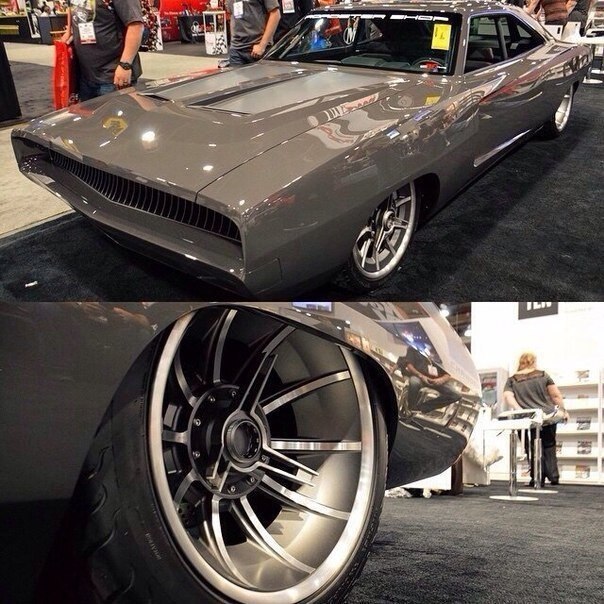 But of course, this is not the only reason for the warning lamp not going out.
But of course, this is not the only reason for the warning lamp not going out.
Also possible causes:
- tire pressure is abnormally high, absolute pressure: 600 kPa (6.1 kgf/cm2, 87 psi) or higher, relative pressure: 500 kPa (5.1 kgf/cm2, 73 psi) ) or higher.
- dead battery in the valve installed in the wheel (battery life 10 years).
- devices that use a similar radio frequency are located in the immediate vicinity of the car or are used in the car.
- a tinting film that affects radio signals is pasted on the car windows.
- a large amount of snow or ice has stuck in the wheel arches or on the rims.
- Tires that do not meet the specifications are installed on the vehicles.
- a large metal object that can affect the radio signal is located in the trunk.
- no spare wheel.
- if, when reinstalling the wheels, a valve with a sensor is not installed in any of the wheels.
The table below shows the modes of operation of the dTPMS indicator light on the instrument panel in accordance with various situations that arise during operation (Fig. 9).
The dTPMS system is simple and straightforward, but despite this, for the 2008 Toyota Land Cruiser, it has 31 diagnostic trouble codes (DTCs). It is gratifying that the codes quite accurately localize the area of \u200b\u200bthe malfunction and greatly facilitate the work of diagnosing and repairing.
For more detailed information in each case, of course, it is necessary to use the manual for the maintenance and repair of the car.
Tire pressure monitoring systems are not limited to the two types of iTPMS and dTPMS described above, there are still quite original proposals for monitoring tire pressure in the aftermarket. I can't help mentioning one of them. This is probably the cheapest type of TPMS system (less than $15 in the US for a kit). Simple spring-loaded "protector caps" that fit over the existing wheel inflation valve stem. The caps have windows that show the internal color of the indicator.
Simple spring-loaded "protector caps" that fit over the existing wheel inflation valve stem. The caps have windows that show the internal color of the indicator.
Green means that the tires have good pressure (2.1-2.3 bar), we see yellow if the pressure drops by 0.3 bar, and red if the pressure drops by 0.7 or more bar (Fig. 10):
The only disadvantage of this system is that it requires the driver to visually inspect the tire. There is no warning light in the car interior or any other way to warn the driver. If a tire loses pressure while driving, you won't know it until it's completely flat.
Now, as mentioned at the beginning of the article, some information in defense of the iTPMS system from the manufacturer. Looking at the problem from a different angle...
Indirect tire pressure monitoring system
(Indirect Tire Pressure Monitoring Systems) - Myths and Facts.
http://www.niradynamics.se/resource.php?tag=itpms_myths_english
European Parliament in 2009adopted the decision that all passenger vehicles should be equipped with a tire pressure monitoring system (TPMS). This applies to new car models produced after November 2012 and all vehicles that will be newly registered in traffic accidents from November 2014. This is the result of the work carried out by the EU leadership, not only to protect the environment, but also to improve road safety. There are still too many cars on the road with too low tire pressures - this affects the increase in fuel consumption, and as a result, an increase in harmful emissions into the atmosphere, and in extreme cases, these cars are a real threat to road safety. The lack of normal tire pressure is often considered as one of the causes in a large proportion of car accidents and accidents.
In 2010, about 15% of all new European cars were equipped with a tire pressure monitoring system, and it is very encouraging that this number continues to grow steadily. However, most drivers are not yet familiar with these systems and it is time to learn the facts and dispel some of the myths. First, there are two different types of tire pressure monitoring systems, "direct" and "indirect". Both technologies have their strengths and weaknesses.
However, most drivers are not yet familiar with these systems and it is time to learn the facts and dispel some of the myths. First, there are two different types of tire pressure monitoring systems, "direct" and "indirect". Both technologies have their strengths and weaknesses.
The direct system or dTPMS is equipped with tire pressure sensors, which are usually attached to the disc. They measure pressure, and often also temperature, and send this data via radio signal to the antenna of the receiving device in the car. One of the most obvious advantages of this system is the constant monitoring of pressure, which on some car models is even displayed on the monitor for the convenience of the driver. But there are also disadvantages: transmitters require batteries, which, as they wear out, must be replaced after a few years. With some luck, this may coincide with an already scheduled tire change, otherwise the tires must be removed and remounted specifically to replace the sensor power supply. In addition, most sensors are designed so that the battery cannot be replaced separately and therefore the entire sensor assembly must be replaced. It is also necessary to have a set of sensors on both summer and winter wheels. With prices over 50€ per sensor, this becomes a costly affair. Added to this is the additional emerging problem with the disposal of toxic and electronic waste.
In addition, most sensors are designed so that the battery cannot be replaced separately and therefore the entire sensor assembly must be replaced. It is also necessary to have a set of sensors on both summer and winter wheels. With prices over 50€ per sensor, this becomes a costly affair. Added to this is the additional emerging problem with the disposal of toxic and electronic waste.
The Indirect Tire Pressure Monitoring System, or iTPMS, does not use an additional sensor in the wheels - it uses existing wheel speed signals from ABS/ESP. iTPMS technology links them to other signals such as steering angle and engine torque, and through analysis of the input data and integral calculations, tire pressure can be controlled indirectly - hence the name.
iTPMS has proven to be very reliable and easy to handle. After every tire pressure check or wheel change, there is no need to reset the system - the data is reset with a simple push of a button. The system now knows the nominal pressure. This makes it possible to detect pressure loss not only in a single wheel caused, for example, by a puncture, but also a gradual loss of air over a long period of time in all four wheels.
This makes it possible to detect pressure loss not only in a single wheel caused, for example, by a puncture, but also a gradual loss of air over a long period of time in all four wheels.
There are many myths and prejudices about the iTPMS system, and for most of them there is no factual basis or they are simply erroneous. Therefore, two leading iTPMS suppliers Dunlop Tech from Hanau, Germany and NIRA Dynamics from Linköping, Sweden, decided to test their products with TÜV SÜD together in order to provide a factual information base about iTPMS for discussion. Both companies provided one vehicle each with summer and winter tires for testing.
NIRA Dynamics AB from Linköping, Sweden is a company specialized in automotive software solutions. The main product of the company is the iTPMS, called TPI (Tire Pressure Indicator), which can be found mainly in the models of Volkswagen Group vehicles.
Dunlop Tech GmbH from Hanau, Germany develops and supplies worldwide tire mobility systems such as IMS (Instant Mobility System) and Warnair as well as iTPMS. Cars all over the world are equipped with Dunlop Tech high-tech products.
Cars all over the world are equipped with Dunlop Tech high-tech products.
1) iTPMS can not only detect the pressure loss of a single wheel, but also has become a standard function to reliably monitor the slow loss of pressure in all four wheels. The modern second generation iTPMS uses the so-called "spectral analysis of monitoring the pressure of certain tires depending on the amplitude of the signal fluctuations." This is done individually for each wheel and allows comprehensive control of all four wheels. The new EU legislation already provides for appropriate tests. Indirect systems can detect a 20% drop in pressure across all four wheels after 15 minutes of driving time. This is four times faster than required by law.
2) The iTPMS is accurate, reliable and warns even at moderate pressure losses. The temperature difference between a cool morning and a hot afternoon on a sunny day can result in a tire pressure difference of more than 0. 3 bar. The effect of increasing and decreasing the temperature of the air in the tires while driving can add another 0.2-0.3 bar. However, there is no reason why an iTPMS warning banner on the instrument panel would cause the driver to drive to the nearest gas station to inflate the tires. Fixing a tire pressure drop of 0.2 bar or 10% in practice does not make sense and can only unreasonably increase the costs of drivers for the operation of vehicles.
3 bar. The effect of increasing and decreasing the temperature of the air in the tires while driving can add another 0.2-0.3 bar. However, there is no reason why an iTPMS warning banner on the instrument panel would cause the driver to drive to the nearest gas station to inflate the tires. Fixing a tire pressure drop of 0.2 bar or 10% in practice does not make sense and can only unreasonably increase the costs of drivers for the operation of vehicles.
In addition, a distinction must be made between the accuracy of the measurement and the warning threshold of the iTPMS, which has been set at 20% of the pressure drop from the initial level. Current EU legislation prescribes to warn the driver no later than the pressure drop in the tires exceeds 20%, but as practice shows, even earlier. Tests carried out by TÜV SÜD confirm this.
A study conducted by TNS Sifo among Swedish motorists showed that more than half of motorists consider pressure loss warnings of 15% too premature and not justified, a warning of pressure loss of 20% is considered premature and not justified by 25% of motorists.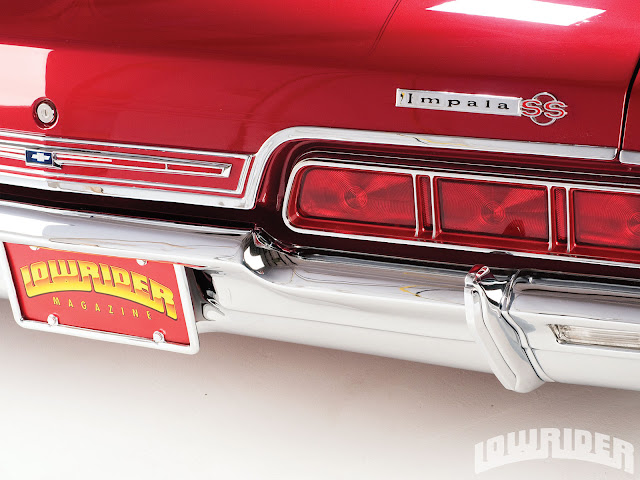 The risk of ignoring the warning by car owners is too high if the thresholds are not high.
The risk of ignoring the warning by car owners is too high if the thresholds are not high.
3) The iTPMS system not only works with all original tires and rims, it is also compatible with most new tires and rims available in the aftermarket. Currently, indirect systems are configured to work optimally with all types of original tires. In addition, they are tested with a variety of new popular tires and rims available in the aftermarket to ensure that drivers will not have problems later when replacing original tires and rims. Thus, iTPMS will work well with almost any original tire suitable for a particular vehicle. Unlike direct dTPMS sensors installed on the original rim, which are not always suitable for aftermarket rims.
4) The operation of the iTPMS system at high speeds, as is often the case on German motorways. Constant comparison of the speed of each wheel is one of the mainstays of the iTPMS system and this function works perfectly even at speeds above 130 km/h, reliably detecting punctures even on the German autobahns.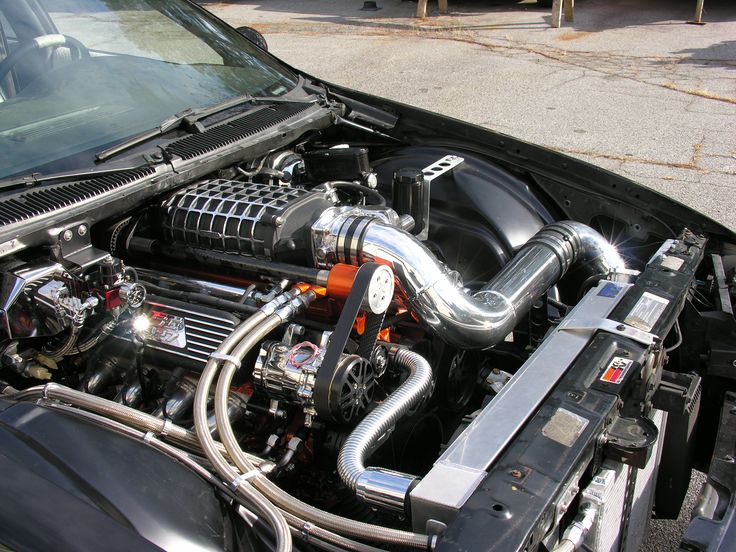 As, for example, one of the tests showed. The iTPMS warning banner on the instrument panel came on at a vehicle speed of approximately 170 km/h.
As, for example, one of the tests showed. The iTPMS warning banner on the instrument panel came on at a vehicle speed of approximately 170 km/h.
5) The iTPMS is resistant to load changes. Modern indirect systems have complex algorithms for compensating and accounting for load changes. Tests no. 11 and 12 by TÜV SÜD carried out with a load difference of 250 kg on the rear axle - up to 2 adults in the rear seat and about 100 kg of luggage - clearly show that the load is not a problem for iTPMS.
6) The iTPMS can reliably indicate which wheels are too low. Modern iTPMS reliably show if one or more wheels have problems. The driver knows exactly which tires to change and can therefore choose a safe place to stop and repair.
7) The iTPMS system will detect a completely flat tire in time. Quite a common occurrence when the driver does not notice a tire puncture in the morning after parking the car for the night. The next morning, the tire is flat, but this may not be immediately apparent. In any case, the purpose of iTPMS is to warn you about this as soon as possible so that you do not drive onto a regular road with a faulty wheel, and even more so onto a freeway. The iTPMS system already has such a function, and the possibilities are constantly expanding. Test No. 15 from TÜV SÜD shows that a flat tire can be detected in about 10 seconds.
In any case, the purpose of iTPMS is to warn you about this as soon as possible so that you do not drive onto a regular road with a faulty wheel, and even more so onto a freeway. The iTPMS system already has such a function, and the possibilities are constantly expanding. Test No. 15 from TÜV SÜD shows that a flat tire can be detected in about 10 seconds.
8) The TPMS system, from the consumer's point of view, should continuously monitor pressure losses, and not periodically monitor the condition of the tires. Sudden pressure drops are very rare in practice and actual pressure drops are not sudden events. Even punctures result in a gradual, sustained loss over many minutes, and often hours. Natural pressure losses due to diffusion or leaks through microscopic openings can take several months until they reach a significant size. A sudden jump in tire pressure, for example by 20%, is therefore not the rule, but a rare exception. Therefore, in real life, TPMS systems must be particularly sensitive to the control of continuous pressure losses. The so-called "step test" according to the existing law has little practical value, despite the fact that the legal requirements are described precisely as "step pressure control". But this is mainly due to the fact that there is a certain belief that the test cannot last six months. In addition, "pressure step control" is easier to implement and more accurate to repeat. Therefore, for the sake of simplicity, it is assumed that TPMS that pass the “pressure step control” tests will also detect a real, sustained pressure drop. The customer-oriented iTPMS system has been able to show all its advantages in the tests carried out, because this system can monitor the actual tire pressure continuously. The "step pressure control" tests performed by dTPMS appear to be faster and more accurate than iTPMS than they actually are in practice. Tests carried out by TÜV SÜD in terms of continuous monitoring of pressure losses, in particular test no. 13, showed this unambiguously and clearly. iTPMS detects 20% loss of pressure on all four wheels after 15 minutes.
The so-called "step test" according to the existing law has little practical value, despite the fact that the legal requirements are described precisely as "step pressure control". But this is mainly due to the fact that there is a certain belief that the test cannot last six months. In addition, "pressure step control" is easier to implement and more accurate to repeat. Therefore, for the sake of simplicity, it is assumed that TPMS that pass the “pressure step control” tests will also detect a real, sustained pressure drop. The customer-oriented iTPMS system has been able to show all its advantages in the tests carried out, because this system can monitor the actual tire pressure continuously. The "step pressure control" tests performed by dTPMS appear to be faster and more accurate than iTPMS than they actually are in practice. Tests carried out by TÜV SÜD in terms of continuous monitoring of pressure losses, in particular test no. 13, showed this unambiguously and clearly. iTPMS detects 20% loss of pressure on all four wheels after 15 minutes.